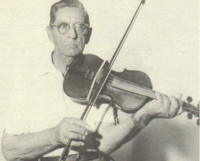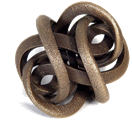Annotation:Valse des Vachers: Difference between revisions
No edit summary |
Alan Snyder (talk | contribs) m (Fix HTML) |
||
| Line 2: | Line 2: | ||
---- | ---- | ||
<p><font face="garamond, serif" size="4"> | <p><font face="garamond, serif" size="4"> | ||
'''VALSE DES VACHERS''' (Cowboy Waltz). AKA – “Valse de Vacher," "Valse à Vacher.” Cajun, Waltz. USA, southwestern Louisiana. D Major. GDad or Standard tuning (fiddle). AB (Fret/Doucet): AA(Vocal)BB(Vocal)BAA(Vocal)A(Vocal)B. Dennis McGee recorded the song twice in the | '''VALSE DES VACHERS''' (Cowboy Waltz). AKA – “Valse de Vacher," "Valse à Vacher.” Cajun, Waltz. USA, southwestern Louisiana. D Major. GDad or Standard tuning (fiddle). AB (Fret/Doucet): AA(Vocal)BB(Vocal)BAA(Vocal)A(Vocal)B. Dennis McGee recorded the song twice in the first half of the 20th century, with different words. He used an open tuning. Related songs, according to Raymond Francois (1990), are Adam Hebert's "[[My Rope and Spurs]]" and Shirley Bergeron's "[[Valse du Passé]]." “[[Port Arthur Blues]]” is a duple-time version of the melody. | ||
<br> | <br> | ||
<br> | <br> | ||
| Line 11: | Line 11: | ||
<br> | <br> | ||
</font></p> | </font></p> | ||
[[File:mcgee2.png|200px|thumb|left|Dennis McGee]] | |||
<p><font face="garamond, serif" size="4"> | <p><font face="garamond, serif" size="4"> | ||
''Printed sources'': Francois ('''Yé Yaille, Chère!'''), 1990; pp. 303-305. '''Frets Magazine''', "Michael Doucet," September 1987; p. 49. | ''Printed sources'': Francois ('''Yé Yaille, Chère!'''), 1990; pp. 303-305. '''Frets Magazine''', "Michael Doucet," September 1987; p. 49. | ||
<br> | <br> | ||
| Line 18: | Line 18: | ||
</font></p> | </font></p> | ||
<p><font face="garamond, serif" size="4"> | <p><font face="garamond, serif" size="4"> | ||
''Recorded sources'': <font color=teal>Arhoolie 5036, Beausoleil | ''Recorded sources'': | ||
<font color=teal> | |||
Arhoolie 5036, Beausoleil – "Allons A Lafayette". | |||
Buvette 2003, Bayou Seco – "Following In The Tuneprints." | |||
Morning Star 45002, "The Early Recordings of Dennis McGee (La.) 1929–1930." | |||
Swallow Records SW-6030, Dennis McGee. | |||
Swing Cat 1612, “Al Berard & Friends” (appears as “Cowboy Waltz”). | |||
</font> | |||
<br> | <br> | ||
<br> | <br> | ||
| Line 27: | Line 34: | ||
</font></p> | </font></p> | ||
<br> | <br> | ||
<br> | <br style="clear:both"/> | ||
---- | ---- | ||
=='''Back to [[{{BASEPAGENAME}}]]'''== | =='''Back to [[{{BASEPAGENAME}}]]'''== | ||
Revision as of 05:20, 29 December 2016
Back to Valse des Vachers
VALSE DES VACHERS (Cowboy Waltz). AKA – “Valse de Vacher," "Valse à Vacher.” Cajun, Waltz. USA, southwestern Louisiana. D Major. GDad or Standard tuning (fiddle). AB (Fret/Doucet): AA(Vocal)BB(Vocal)BAA(Vocal)A(Vocal)B. Dennis McGee recorded the song twice in the first half of the 20th century, with different words. He used an open tuning. Related songs, according to Raymond Francois (1990), are Adam Hebert's "My Rope and Spurs" and Shirley Bergeron's "Valse du Passé." “Port Arthur Blues” is a duple-time version of the melody.
Source for notated version: Cajun fiddler Dennis McGee via Michael Doucet (La.) [Frets Magazine]; Dennis McGee (La.) [Francois].

Printed sources: Francois (Yé Yaille, Chère!), 1990; pp. 303-305. Frets Magazine, "Michael Doucet," September 1987; p. 49.
Recorded sources:
Arhoolie 5036, Beausoleil – "Allons A Lafayette".
Buvette 2003, Bayou Seco – "Following In The Tuneprints."
Morning Star 45002, "The Early Recordings of Dennis McGee (La.) 1929–1930."
Swallow Records SW-6030, Dennis McGee.
Swing Cat 1612, “Al Berard & Friends” (appears as “Cowboy Waltz”).
See also listing at:
Jane Keefer's Folk Music Index: An Index to Recorded Sources [1]
